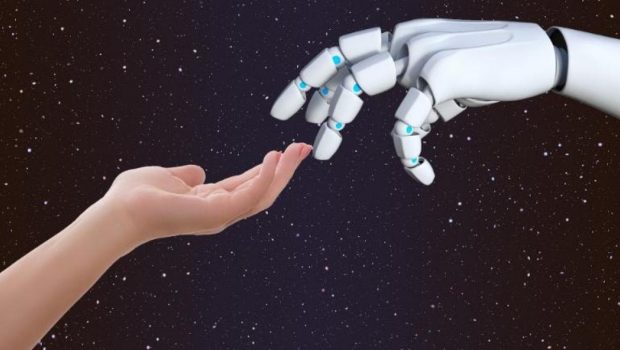How to remain human in a technology-driven world
COVID-19 has reinforced our conviction that human concerns are not separate from technological advances at all, but integral for organisations who are looking to capture the full value of the technologies they've put in place.
As organisations looked to adapt their ways of working in response to the crisis, they found that in many though not all parts of the world, technology was not the greatest challenge.
In those where the technology has been available, one of the biggest barriers was the difficulty of building models to integrate humans with those technologies: to create new habits and management practices for how people adapt, behave, and work in partnership with the technology available to them; to maximise worker potential through the cultivation of capabilities and to safeguard ethical values.
Also Read: Riding the reskilling and upskilling tsunami: Tackling job automation-led displacement
The pandemic has caused them to feel "stuck" in both their professional and personal lives and is pushing them to rethink their future, said a majority of respondents in the AI@Work survey.
As a result, in India 85% of the Indian workforce is facing major obstacles in their path forward, 38% are struggling financially, 27% don't know what career change makes sense for them, 22% are not confident enough to make a change and 29% see no growth opportunities within their company.
These are some concerning facts that highlight the changing priorities of the workforce. As they stage the return to work, organisations should seize this opportunity to step back and make sure that they are creating clear connections across individual jobs, team objectives, and the organisation's mission.
They must enable a deeper connection by drawing visible linkages as to how their contributions are making an impact on the organisation and society as a whole.
The success of remote working showed people that while technology can augment and supplement work, it does not replace what is needed from humans.
The organisations have an opportunity to push the envelope in the ways they integrate teams of humans and technology.
Organisations should evolve their thinking about technology from taking a pure substitution view (replacing humans with technology) to using technology as an augmentation or collaboration strategy.
The latter view can allow organisations to not only streamline costs but also create value and ultimately, provide meaning to the workforce as a whole.
Also Read: Will Metaverse give rise to a new-world order?
People's hunger for information during the pandemic validated the phrase "knowledge is power." As individuals around the world clamoured for whatever information they could find on virus spread rates, care information, vaccine development, safety measures, business closures, and more, organisations used institutional knowledge to extend their adaptability, as they were able to quickly deploy workers into new roles, or even new organisations, by leveraging the knowledge that was now at their fingertips.
In the post lockdown era, the organisations have the opportunity to leverage the power of AI to build a culture of actionable knowledge-sharing and knowledge creation that strengthens organisational connectivity and affords the organisation resilience to be able to withstand, and even to thrive in, environments of disruption and uncertainty.
For example, AI and data analytics embedded Cloud can help employers evaluate candidates responding to a job ad on social media.
It works by analysing data shared by each applicant-on his or her skills, work history, and interests-and then matching those patterns against data on the job requirements, the employer's culture, and how recent hires with similar profiles are faring in their jobs.
The goal: quickly identify, even rank candidates most likely to fit in, stay, and ultimately perform at the company.
Through this crisis, the world has had the opportunity to see the resilience and adaptability of the workforce as workers quickly assumed new roles and even contributed to opportunities in different fields and industries.
Organisations should consider how to encourage and offer opportunities for workers to continue to grow and adapt based on their potential, rather than solely on their existing skills or certifications.
Now is not the time to pull back on workforce development efforts, but instead to double down on commitments to building a resilient workforce that can adapt in the face of constant change.
Organisations should take advantage of the power of technology to collect workforce insights by pulling together the key questions that they need to be asking to gain the real-time workforce insights they need.
This is the time for organisations to challenge whether they've been asking the right questions all along and whether they have the governance and processes in place to enable them to use the data to truly sense what is happening across the organisation and workforce.
In the past few months, we have seen a greater appreciation for the breadth of what HR does and can do: It has been essential in everything from monitoring workforce sentiment, to establishing connections between organisational leaders, workers, and teams, to integrating well-being into work and reimagining how, where, and what work gets done.
Emerging from this crisis, organisations should ask themselves if HR is positioned to make the impact they can and should be making across the enterprise.
(The author is Country Head & Senior Director, HCM Cloud, Oracle India.)








Gloss